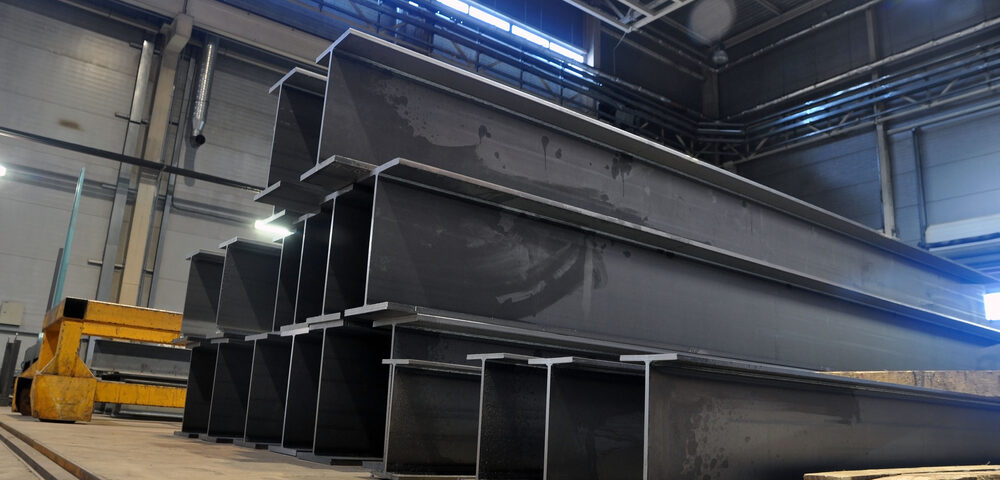Basics and Common Applications of Steel Beam

How Metal and Steel Superalloys Work
February 28, 2023
Steel and Other Heat-Resistant Metal Qualities
March 28, 2023Many are well aware that steel is one of the most commonly-used metals in various construction and similar project needs, and a few particular steel varieties tend to be most useful here. One that’s especially common in various building skeletons and support structures is known as steel beam.
At Wasatch Steel, we’re here to help with any and all of your steel product needs in Salt Lake City or surrounding areas of Utah, including steel beam and many other varieties. What exactly are steel beams, which types of steel beam are commonly found in various areas of construction today, and what are some of the specific ways these products are used across construction and similar applications? Let’s dive in.
What is Steel Beam?
For those just learning about steel beam, it’s a type of metal bar that’s built with a distinctive shape profile, most often found in structural engineering applications. The size and length of any given steel beam will depend on the specific needs of the project, but all feature a cross-section that provides additional support (more on the options for this section in a moment).
Steel beam has become one of the most popular options for structural support in various types of construction projects due to its durability and strength, as well as its affordability compared to other sorts of materials.
Types of Steel Beam
Generally speaking, two broad types of steel beam dominate this conversation:
I-beam: The standard form of steel beam is known as an I-beam, so named due to its distinctive shape profile. It’s important to note that there are also several subcategories of steel beam within this category. This type has two horizontal plates, known as flanges, that create the look of a capital-I when they’re viewed. These products will also come with tapered edges, which come in handy for various construction needs.
H-beam: Structurally similar to the I-beam, this type of steel beam is also known as a wide flange beam due to its wider shape profile. In this variety, the two plates that make up the flanges are roughly equal in size, creating a look like a capital-H. These beams have square edges instead of tapered edges, and tend to be thicker than I-beams.
Benefits of Steel Beam
Steel beam is popular for a variety of reasons, but the primary ones are its strength and durability. An I-beam can support far more weight than wood or other composite materials, which makes it an ideal choice for certain jobs where weight is a factor.
It’s also highly resistant to moisture and rot, making it perfect for outdoor construction in harsher climates. Finally, it’s also recyclable and eco-friendly in comparison to other industrial metals.
Uses a Rolling Process
Both the steel beam varieties we went over above are produced using a rolling process, where steel is first heated and then passed through forming rolls that shape it into its final form. This results in a product that’s stronger and more consistent.
All of these factors make steel beam an ideal choice for framing and support in various types of construction projects, from small-scale residential jobs to large-scale commercial buildings.
Specific Construction Applications of Steel Beam
Here are some of the distinct ways steel beam is often used within various construction projects:
- Support structures: One of the most common uses for steel beam is as support structures for various buildings. This includes both interior and exterior walls, columns, and other vertical supports that help provide the structure of a building. By using steel beam in these applications, buildings can be designed to better withstand the test of time.
- Roofing: Steel beam is also popular for roofing structures, as it offers both strength and durability that other materials may not be able to match. This could include things like trusses, rafters, and even support columns for skylights.
- Flooring: Steel beam is also commonly used as floor joists, which help to provide additional stability and strength to a building. This type of application is often seen in areas where the floor will be exposed to heavier weight or higher levels of traffic, as it provides an extra layer of protection against wear and tear.
- Bridges: One particular application where steel beam really shines is with bridge construction. Due to its strength and durability, it’s often the go-to choice for both large and small bridges, as well as other types of crossings.
Steel beam has become one of the top choices for support structures in various types of construction projects due to its strength, affordability, and recyclability. It’s also used in a variety of different applications, from supporting walls to providing stability for floors and roofs. With both I-beam and H-beam steel varieties available, it’s the perfect choice for many construction needs.
And at Wasatch Steel, we offer both of these steel varieties in a variety of sizes and lengths, so you’ll always be able to find the perfect solution for your project. So if you’re looking for quality steel beam at an affordable price in SLC or other parts of Utah, look no further than Wasatch Steel!



